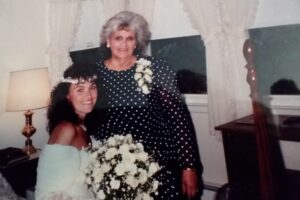Working in the area of senior living and healthcare, my thoughts often turn to my own aging and how I will manage when I am less independent. Of course, there are no crystal balls to let us know exactly what is coming down the pike for each of us, or when, but we do know that we can expect some changes in our ability to manage our day to day routines along the way.
For those currently in this position, “Aging in Place,” offers a good solution. This is a huge grass roots and global effort to help seniors stay in their homes for as long as safely possible instead of placing them in 24/7 skilled nursing facilities before they actually need such comprehensive services. Since seniors are living longer and federal funding for senior healthcare costs seems to be in flux all the time, there is a definite push to find alternative measures to keep seniors in their homes.
And who wouldn’t rather stay in their home if given the choice?! Unnecessary nursing home placement can increase a person’s mental and physical decline and can be a drain on financial resources.
So, how does one go about “Aging in Place?” Well, in order for a senior to remain in their homes, among assurances that they will receive the services they need, there is also a focus on their living space. Can they move safely from room to room? Is there enough space for a wheelchair to maneuver about? Are the faucets within reach? How does one get in the tub or shower?
For decades now, whole areas of study and research have been done on creating accessible living space for those who need such help, be it from decreased range of motion, unsteadiness, being wheelchair bound, or a number of other physical restrictions making it difficult to live safely alone. A healthcare provider like the Tunstall Healthcare Australia provides monitored assistive technology solutions to support people with a wide variety of care needs to live safely.
Evolving from this effort is Universal Design, a broad spectrum of ideas that develops buildings, products and environments that are inherently accessible for everyone – those who are old and young, and those with and without disabilities. They are non-discriminatory designs that every person can use – whether they have a restriction or not.
Some examples of Universal Design are:
- Retractable towel rings – people can grab the towel, pull it to where they are and just let go when they are done.
- Zero-thresholds – no barriers from room to room. Entry-ways and floors are flush.
- 36” doorways to accommodate wheelchairs
- Roll-in, wheelchair accessible showers
- Hand-held, adjustable shower head
- Self-drying shower jets/vents
- Flip up shower seats
- Installation of chair lifts
- Walk-in bathtubs
- Strategically placed grab bars
- LED lighting strips to enhance visibility
- Levered handles
- Different height level counter tops
- Sliding shelves
- Knee clearance under sinks
These are just a few examples of Universal Design and the thought process used to create a senior independent living space which allows greater mobility and access for everyone, whether they need it or not. Know more about senior living here. And if you’re looking for affordable senior apartment complexes, property management groups can help.
It is reassuring to know that such measures are already being implemented and that as we all arrive at that point in our lives, when a little extra help is needed, tried and true methods will already be in place. If you need a senior living center for your loved one, make sure to contact your local senior living facility for more info. You may also visit sites like https://residencesatplainview.com/ or https://villadesanantonio.com/living-options/independent-living/ to get an idea. And if your aging parents are in need of special care for a short or long period of time, they may be able to get it from an assisted living and memory care community from places like Crescendo Senior Living.







